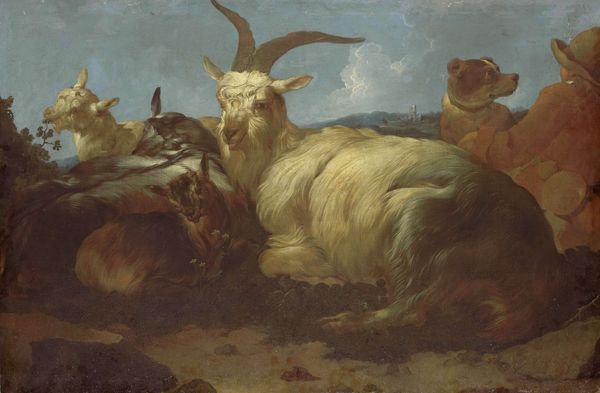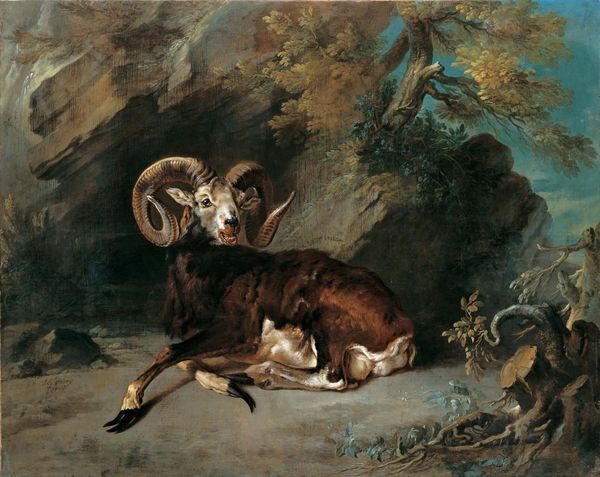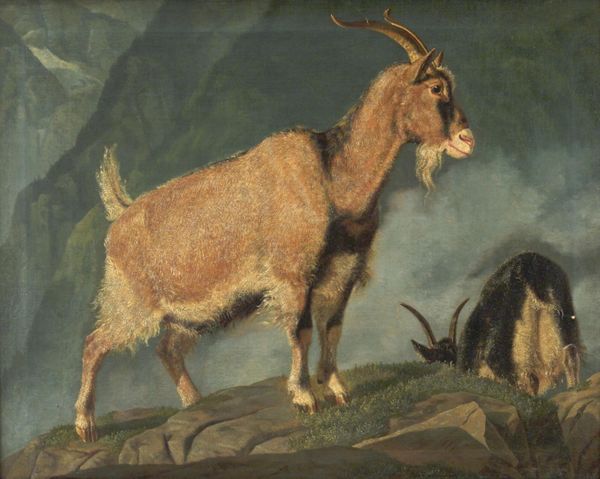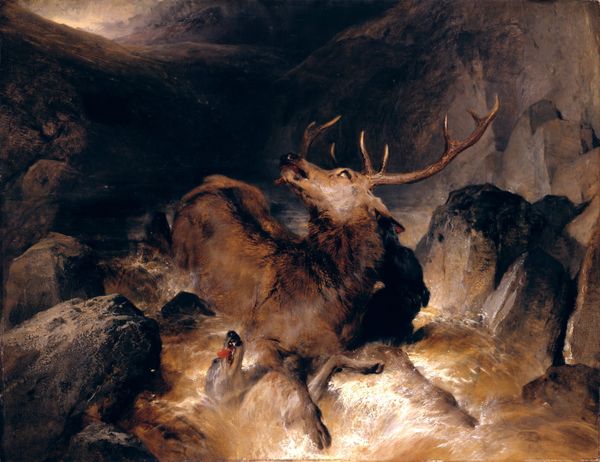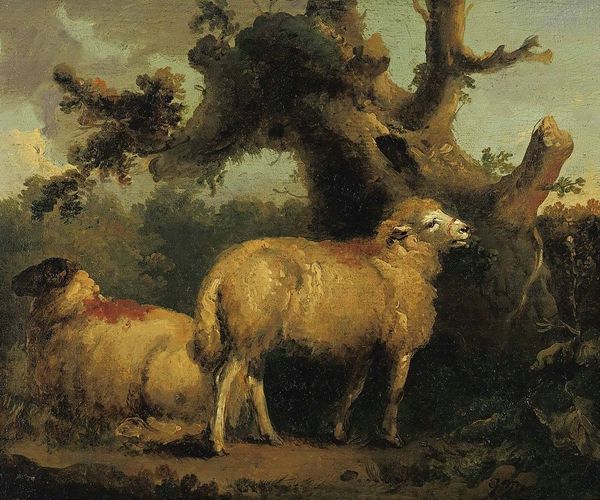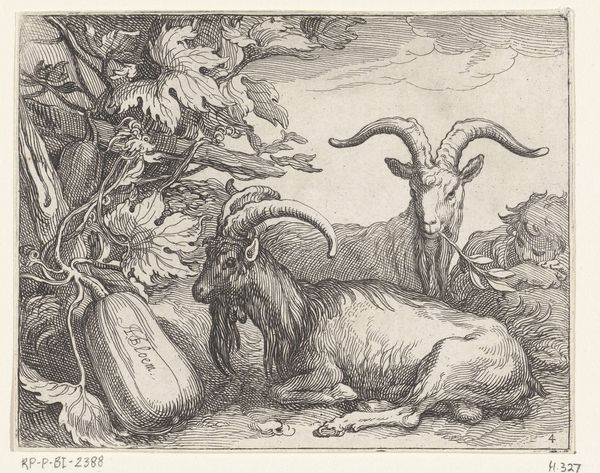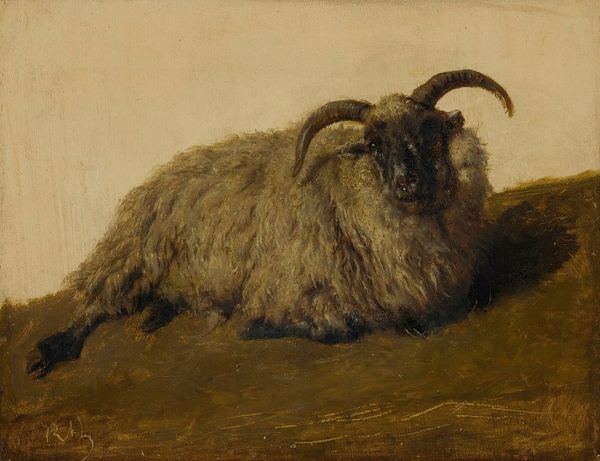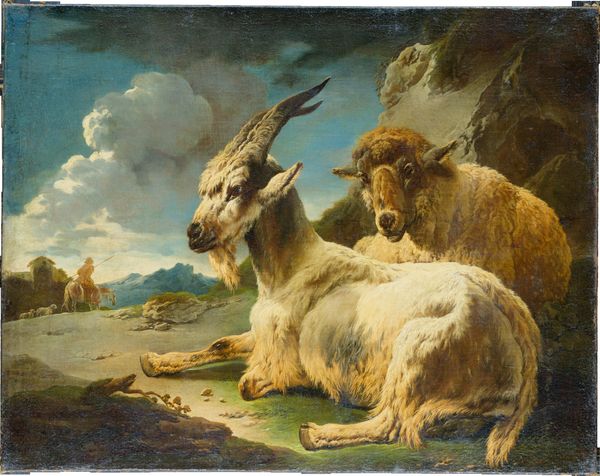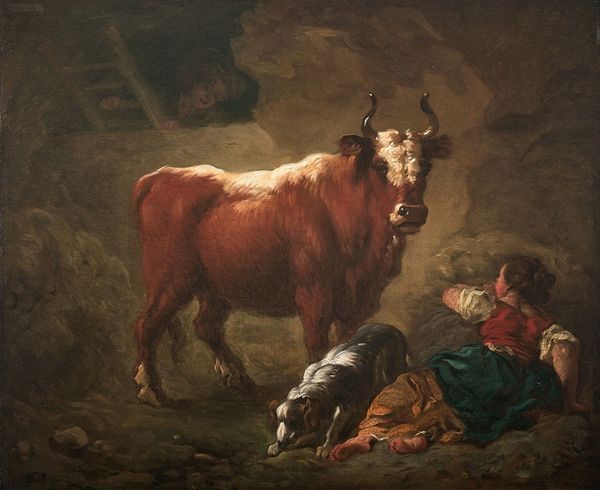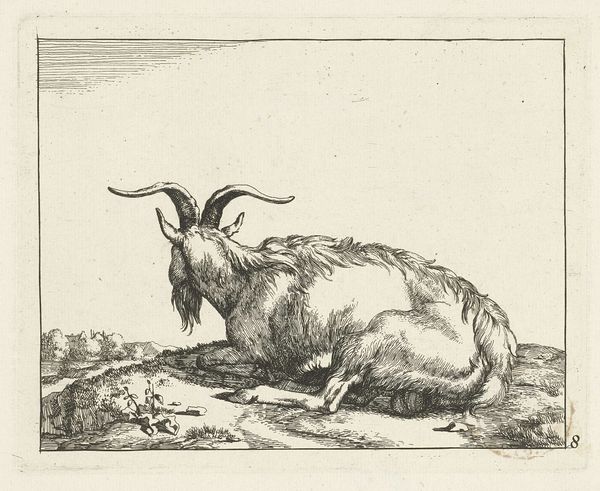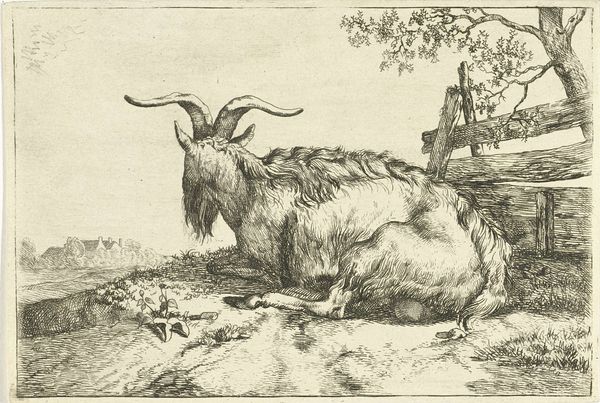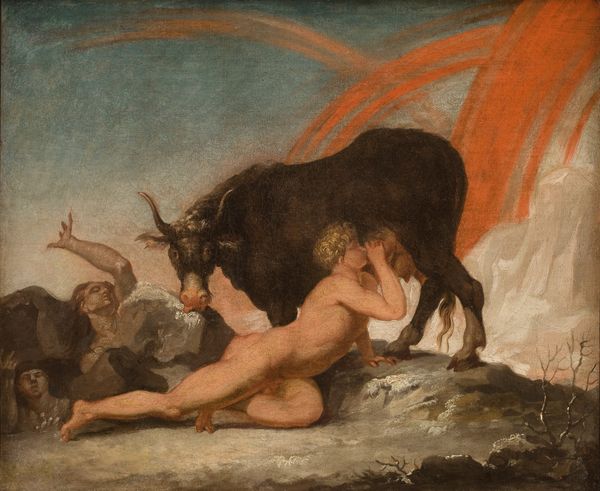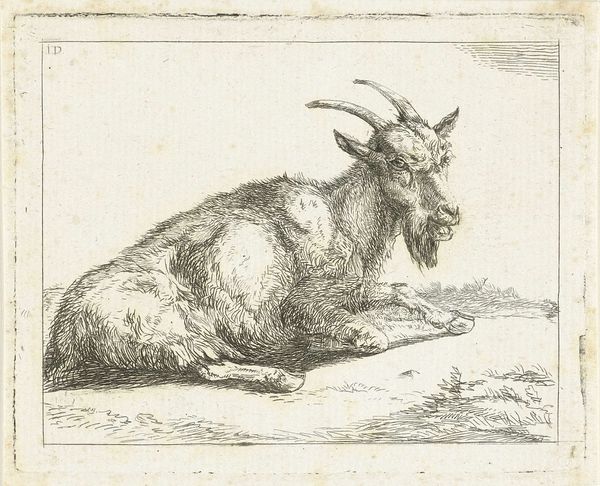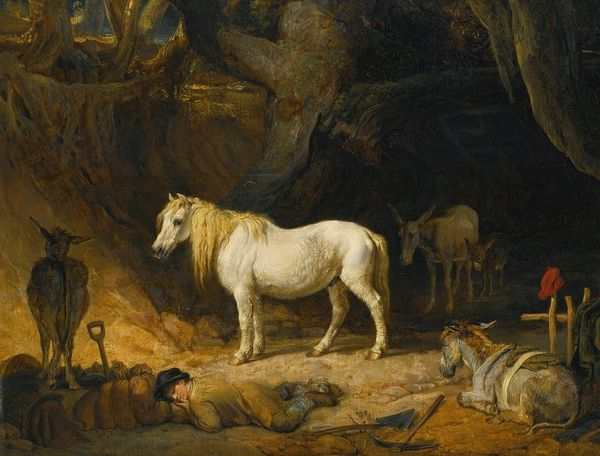
painting, oil-paint
#
portrait
#
baroque
#
painting
#
oil-paint
#
landscape
#
charcoal drawing
#
oil painting
#
genre-painting
#
realism
Copyright: Public domain
Editor: We’re looking at "Goat in a Landscape" by Gerrit Dou. The canvas is dominated by a furry goat taking a rest. The tones are rather somber and the setting looks almost desolate. What formal qualities strike you when you view this piece? Curator: Immediately, it is the texture. Observe how the artist renders the goat’s hair, contrasting the coarse, dark fur around its head with the softer, light fleece on its body. The application of paint evokes tactile sensations. Note also the stark contrast between the dark, gnarled tree on the right and the relatively brighter landscape visible in the distance. How does this opposition inform the work's structure? Editor: It definitely creates a sense of depth and drama, pulling the eye back into the landscape. What's the effect of that oversized plant? Curator: Precisely. Consider the almost unnatural prominence of the plant on the left. Its large leaves create a repoussoir effect, drawing the viewer into the scene. However, more importantly, they also provide a point of formal contrast to the organic shapes of the goat and tree. It gives an odd tone and flattens pictorial space by sitting at the extreme foreground and interrupting linear perspective, thereby asserting the flatness of the picture plane. Do you perceive it similarly? Editor: Yes, now I see that it disrupts the depth in an intriguing way. I'm beginning to understand how Dou uses these visual techniques to make you see the painting as a surface and structure, not just a landscape. Curator: Indeed. Ultimately, the formal analysis unveils Dou's artistic project. Editor: That's such an interesting reading, thinking about the formal aspects instead of symbolic ones opens up another layer of appreciating the work. Curator: Absolutely, it shows how paying attention to visual components illuminates the work beyond initial impressions.
Comments
No comments
Be the first to comment and join the conversation on the ultimate creative platform.
